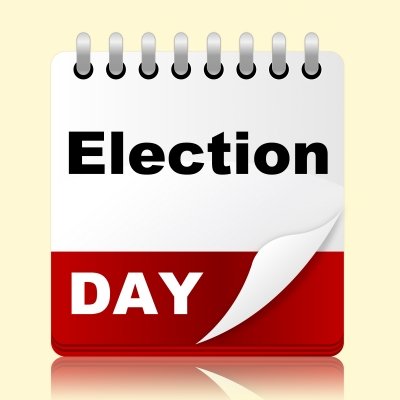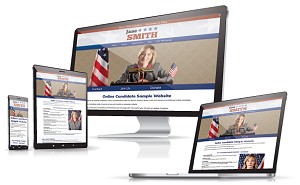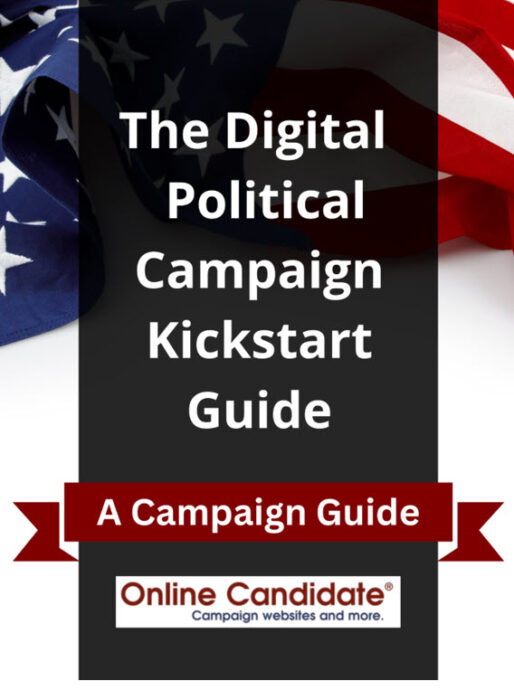3 Online Strategies For Your Campaign’s Final Stretch
 As Election Day grows near, reaching out to voters becomes more and more critical. There are the obvious ways of contacting them, such as through mailers and get-out-the-vote calling. Here are three ways to use your online resources to help get your campaign through that final stretch.
As Election Day grows near, reaching out to voters becomes more and more critical. There are the obvious ways of contacting them, such as through mailers and get-out-the-vote calling. Here are three ways to use your online resources to help get your campaign through that final stretch.
Use your Email List: Increase the number of messages as election day grows near. Use them to address specific issues, and to react to any unplanned issues that come up. Keep your messages brief and to the point. Some topic ideas include encouraging final campaign donations, providing absentee voting instructions and notifying voters who need rides to the polls.
Start or Ramp Up Your Online Advertising: Drive traffic to your campaign website with Pay Per Click or social media advertising. If you have the budget, consider running banner ads on local newspaper websites. Flooding the online market with advertising makes it appear to others as if your online support has surged.
Push for Final Donations: This is the endgame. Make use of the ‘rule of three’ and ask for a final donation from those who have already given, and have them donate through your website. Consider making the donation request already on your site more prominent. Remember that having a donation request for a specific purpose (such as a final mailing) is more effective than a more general donation request.
Looking for more campaign correspondence templates that cover ALL aspects of a local political campaign – from fund raising appeals to press releases to endorsement requests to thank you letters? Save time and effort with our Campaign Letter Templates!
Your Last Fund Raising Appeal – Make that Final Push!
 As voting day nears, don’t become complacent! Make that final push for a campaign contribution.
As voting day nears, don’t become complacent! Make that final push for a campaign contribution.
The key at this point in time is to make your last fundraising appeal specific, and make let the donors know that the money will be used for a specific goal that is critical to victory. For example, you could say that you have one final brochure printed and ready to go, but you need money for the postage. Or that you need to hire more phone bank staffers to help get out the vote.
Of course, what you say you need the money for in your letter should actually be what the money is used for. Targeting supporters who have already donated to the campaign is a smart strategy, as they already have a vested interest in the campaign.
Your letter should be frank, but also a bit alarmist by reminding the reader that the campaign has come too far, and is too close to victory to lose it all for a lack of money at the very end.
And be sure you thank your supporters no matter the final outcome.
Save time and effort and download Campaign Letter Templates from our Download Store.
Use Signature Files in Your Campaign Messaging
Signature files are a simple way to promote your campaign through email. A signature file, commonly known as a sig file, is a short block of text that you and your campaign staff append to campaign e-mail to let people know who and what you are.
Your signature file should contain the following information:
• Your name.
• Your campaign name.
• A means of contacting your campaign.
• A campaign slogan. (optional)
Here are a few email signature examples:
Bob Smith, Campaign Director
John Jones for TinyTown Mayor
Ph: 888-555-7774
Fax: 888-555-8090
johnjonesforoffice.com
Bob Smith, Campaign Director
John Jones for TinyTown Mayor
177 West 20 Street, 6th floor
TinyTown, NY 10001
212.555.7646
800.555.8448
johnjonesforoffice.com
You can even get a little fancy, if you want:
*~*~*~*~*~*~*~*~*~*~*~*~*~*~*~*~*~
JOHN JONES FOR TINYTOWN MAYOR
888-555-7774
johnjonesforoffice.com
*~*~*~*~*~*~*~*~*~*~*~*~*~*~*~*~*~
Putting the Local In Local Politics!
*~*~*~*~*~*~*~*~*~*~*~*~*~*~*~*~*~
Bob Smith, Campaign Director
John Jones for TinyTown Mayor
177 West 20 Street, 6th floor
TinyTown, NY 10001
212.555.7646
johnjonesforoffice.com
*~*~*~*~*~*~*~*~*~*~*~*~*~*~*~*~*~
Putting the Local In Local Politics!
Images, such as campaign logos, can also be added to sig files, though some recipients may be annoyed by additional files cluttering up their in boxes. We recommend keeping your signature text-only.
Check your email program’s HELP menu and search for signatures. From there you should be able to find instructions on how to set up a signature for your email account.
Types of Political Campaign Letters
 Ongoing correspondence in a small political campaign is critical to keeping the momentum going. Advertising is geared toward the public, but the local media and individual campaign supporters require a more personal touch.
Ongoing correspondence in a small political campaign is critical to keeping the momentum going. Advertising is geared toward the public, but the local media and individual campaign supporters require a more personal touch.
The typical types of political campaign letters are listed below. There is no particular sequence of letters once a campaign kicks off, and some are used multiple times throughout a campaign.
General Campaign Letter Formats:
- Press Releases: These include your entry into the race, endorsements, issue positions, campaign events, and post-event releases.
- Endorsement Letters: Sample letters to the editor, endorsement requests from other organizations and individuals.
- Fundraising Appeals: General, close family and friends, general appeals, push after primary, follow up appeals, final fund raising push before election or primary.
- Personal Invitation Letter: For guests of honor to campaign events.
- Thank You Letters: For event speakers, donors, volunteers, and supporters.
- Policy Briefs: Detailed policy proposals or positions.
- Volunteer Recruitment: Encouraging community volunteering.
- Community Outreach: Engaging with community leaders.
- Constituent Feedback: Addressing constituent inquiries.
- Event Follow-Up: Thanking attendees and summarizing events.
- Press Kits: Media resource packages containing background information and resources.
- Surrogate Outreach: Enlisting influential support from individuals or organizations.
It’s a good idea to have a series of pre-written letters created early in the campaign. Having your a press release to announce your candidacy, initial fund raising appeals, and thank you letters drafted before you actually need them will save you time and help streamline your correspondence later in the campaign.
Looking for campaign correspondence templates – from fund raising appeals to press releases to endorsement requests to thank you letters? Save time and effort with our Campaign Letter Templates or save with our Combo Package.
Or get a campaign website with Online Candidate and get free access to our Political Letter Generator and other content tools.
Fake Political Websites and Other Dirty Tricks
 This post is several years old now, but the lessons are still relevant as primary and general election season heats up.
This post is several years old now, but the lessons are still relevant as primary and general election season heats up.
Even as far back as 2007, decoy election websites were coming into play…
Today, this bag of tricks now includes a collection of spoofed online forums purporting to support top candidates, while damning them with praise for extreme positions they have never voiced. The operating principle: The best way to undermine a candidate’s supporters is to pretend to be one of them…
Fake spam messages are also included in these political operatives bag of tricks. It’s the 21st century version of push-polls.
By the way, we don’t endorse creating fake sites or forums. They are unethical and will almost certainly come back to hurt the candidate behind them.
However, one ‘dirty trick’ that is perfectly acceptable is to link to outside articles about your opponent using the opponent’s name as the link text.
For example:
<a href=”https://www.localnewspaper.com/article/ councilman-caught-doing-something-wrong.html”>Councilman Bob Jones</a>
This type of linking helps ensure that when someone looks up your opponent’s name, certain articles may appear in the results, as well. If you can influence exactly WHAT articles show up, what’s wrong with that? :)
Just make sure the page you link to is real, preferably from a reliable source like a newspaper, rather than some obscure blog.
Subscribe for our email newsletter for more campaign tips and resources.



